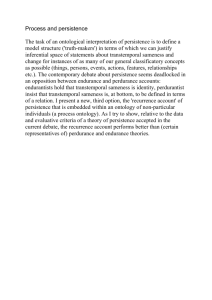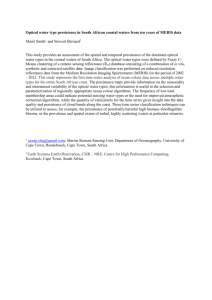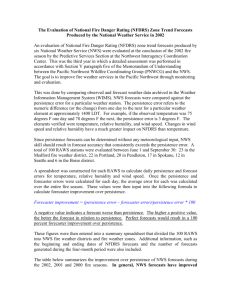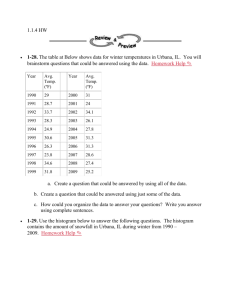Part 1 – Dynamical Parameters
advertisement
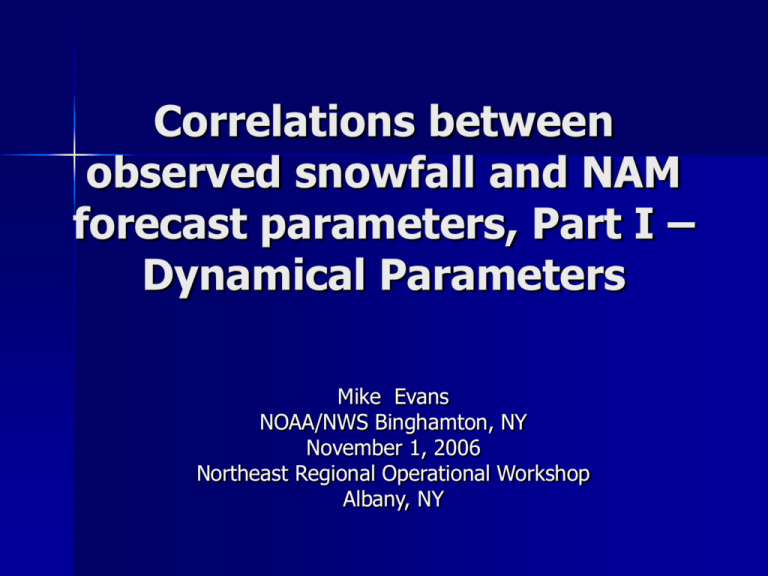
Correlations between observed snowfall and NAM forecast parameters, Part I – Dynamical Parameters Mike Evans NOAA/NWS Binghamton, NY November 1, 2006 Northeast Regional Operational Workshop Albany, NY Purpose Many case studies have shown utility of looking at certain key dynamical parameters – mostly for major events. Goal : to demonstrate the utility (or lack thereof) of examining NAM forecasts of dynamical parameters to differentiate large events from small events using a large data base of cases. Outline Review of conceptual models regarding banding associated with major storms and moderate storms. Our local study methodology Correlations between snowfall and NAMforecast dynamical banded snowfall parameters. Thermodynamic parameters and examples (MJ) Heavy Banded Snowfall Conceptual Model (from Nicosia and Grumm) Frontogenesis and Stability (from Novak et al.) Frontogenesis (shaded) and saturated equivalent potential temperature (contoured) Next Question… What about “moderate” events? Observational experience indicates that many “moderate” events are also banded. Events with less than 0.5 inches of liquid equivalent precipitation can still be disruptive. Can the same concepts shown in the previous slides be applied to these types of events? Moderate Event Schematic Cross Section Schematic cross section through a cool-season moderate precipitation band showing frontogenesis (red ellipse), negative EPV* (dashed blue ellipse), WMSS (brown dotted region), saturation equivalent potential temperature (dark green contours), and transverse circulation (arrows). Summary… Key dynamic factors effecting snowfall appear to be strength, depth and persistence of… Frontogenesis / Frontogenetical Forcing Stability Moisture Forecasters are using these parameters – especially at short ranges Questions… Can we prove that there are direct correlations between observed snowfall and the intensity, depth and persistence these key factors, using 40 km AWIPS forecasts from a large number of heavy and moderate snow events? Can we identify thresholds of these values that would be useful to forecasters? Methodology Examine “synoptic” snow events in the BGM CWA since 2002 (throw out lake-effect; look for events with at least 30 dbz reflectivity). 29 events identified - maximum snow accumulations ranged from 4 to 34 inches. For each event, choose a time when a well-defined band could be identified. Identify the maximum event-total snowfall that occurred in or near the band. Examine 0-24 hr forecast data in time-height cross-sections (to look at depth and persistence of features). Examine 0-24 hr forecast data in conventional cross-sections (for a better look at structure). What parameters do we want to be looking at? Frontal-scale forcing for upward motion – look at Fn vector convergence. Instability – look for negative geostrophic EPV Omega. Why not just look at omega and forget the other stuff? Results – 12 hour forecast event maximum values A band of Fn convergence was found below 500 mb in 25 of 29 events. A layer of negative EPV was identified with 28 of 29 events. Upward motion exceeding 8 µbs-1 found in 26 of 29 events Today – Focus on looking at timeheight cross-sections to examine depth and persistence of these types of features Depth and persistence of threshold values of Fn divergence, EPV and omega – Calculate “areas” on time-height plots – Determine yes/no for certain thresholds Look for combinations of favorable factors Define a * Signature – Omega < -8 µbs-1, EPV < 0, RH > 80 percent. Look for the depth and persistence of the * Signature Example – March 30, 2003, 00z Quantifying depth and persistence of key parameters Correlations - example Depth and persistence of Fn convergence 12 hour forecasts Depth and persistence of negative EPV – 12 hr forecasts Depth and persistence of omega – 12 hr forecasts Omega and Fn convergence Omega and negative EPV Omega and * vs. snowfall Results – depth and persistence 12-hour forecast depth and persistence of lower-tropospheric Fn convergence and negative EPV at a point correlates well with maximum snowfall. 12 hour forecast depth and persistence of co-located upward vertical motion, negative EPV and high RH (* Signature) correlate very well to maximum snowfall. Examining * Signature yields a better correlation with maximum snowfall than just examining upward vertical motion. Upward vertical motion and negative EPV are positively correlated (they don’t just get together by accident). 24 hour forecasts do not correlate well, mainly due to a handful of major model positioning busts. Results – depth and persistence / yes / no questions Examine scatter plots of answers to yes/no questions related to depth and persistence. Try to determine some operationally useful thresholds. Result – yes / no questions Results – yes / no questions Conventional Cross-Sections – Examine Structure For the 29 events in our database, crosssections were taken through radar indicated snow bands, near their time of maximum development Use 0-6 hr forecasts from the 40-km NAM Values were taken at locations on the cross-section that were within 50 km of the snow band Dynamical Parameter Correlations – Maximum omega within areas of negative EPV and RH > 80 percent (0.65) – Magnitude of negative EPV (0.63) – Maximum omega (0.60) – Magnitude of Fn vector convergence (0.48) Summary – Dynamical Parameters Importance of magnitude, depth and persistence of frontogenetical forcing and stability confirmed. 24 hour forecasts not reliable at a point. Some useful thresholds identified.


